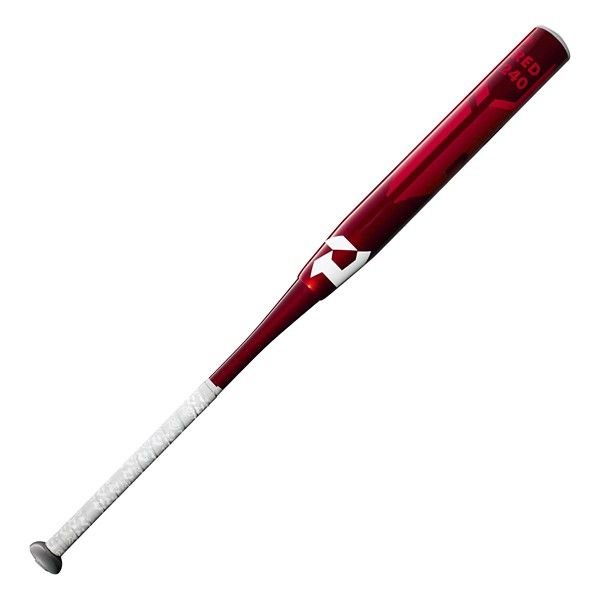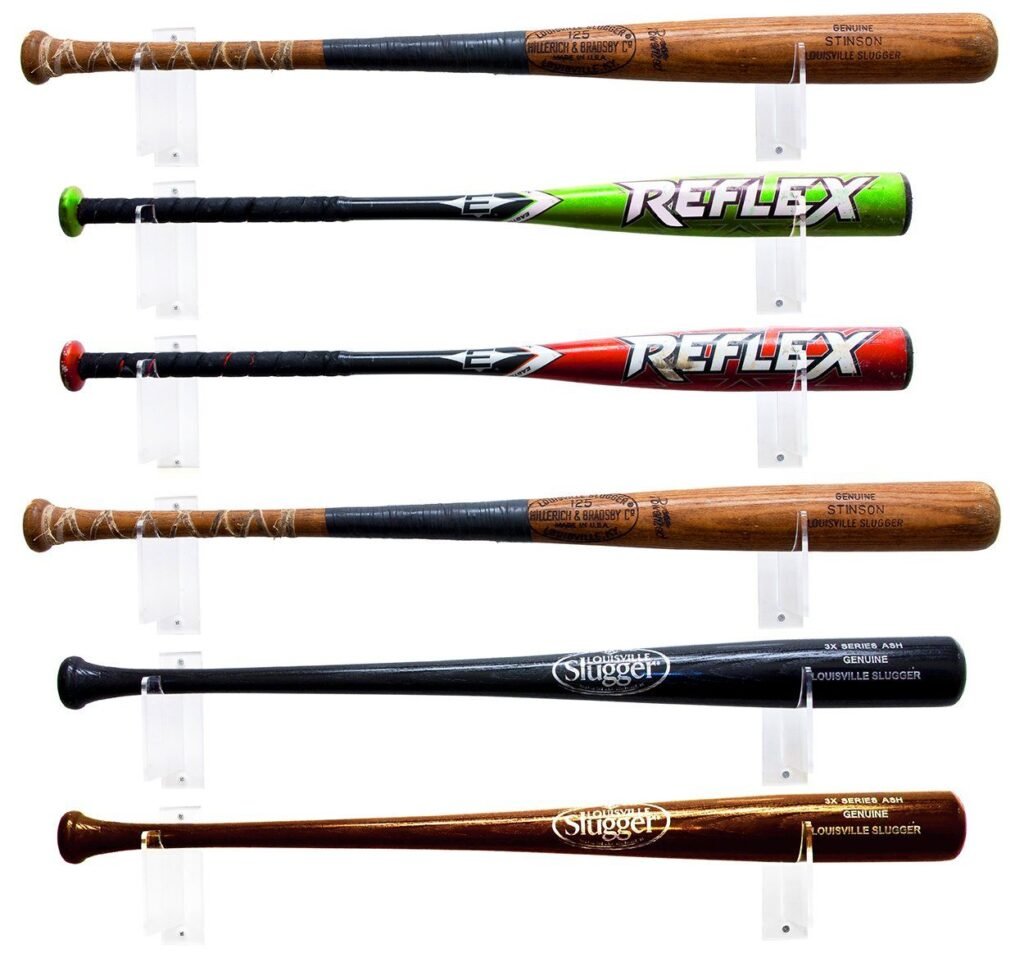How Long Does a Composite Bat Last? Durability Solved!
- April 17, 2023
- 2
As a baseball or softball player, the choice of your bat is crucial to your performance on the field. Composite bats have gained popularity in recent years due
As a baseball or softball player, the choice of your bat is crucial to your performance on the field. Composite bats have gained popularity in recent years due

As a baseball or softball player, the choice of your bat is crucial to your performance on the field. Composite bats have gained popularity in recent years due to their unique construction and performance-enhancing features.
But one burning question remains: How long does a composite bat last? Is it a worthy investment or a short-term solution?
In this article, we will delve into the fascinating world of composite bats and explore the factors that affect their lifespan. Get ready to discover the truth and unleash the full potential of your composite bat!

Composite bats are a type of bat made from layered materials, typically a combination of carbon fiber, fiberglass, and resin. These materials are engineered to create a bat that is lightweight, durable, and capable of producing powerful hits. Unlike traditional wooden bats or aluminum bats, composite bats have a distinct advantage in terms of their trampoline effect, which allows the ball to travel further upon contact. This unique feature has made composite bats a top choice among players looking for that extra edge in their game.
| Also Read This 10 Outstanding Dugout Organization Tips |
The durability of a composite bat is a topic of much debate and speculation among players and coaches alike. Some claim that composite bats can last for many seasons, while others believe that they wear out quickly and lose their performance capabilities. So, what is the truth? What factors affect the lifespan of a composite bat? And how can you maximize its longevity to get the best return on your investment? Join us as we embark on a journey to uncover the answers and shed light on the mysteries of how long a composite bat truly lasts. Get ready to take your game to new heights!
The lifespan of a composite bat is a topic of much interest among baseball and softball players. While there is no definitive answer, extensive research and analysis have shed light on this subject.
On average, a high-quality composite bat can last for approximately 500 to 1000 hits, depending on various factors. However, understanding the factors that affect the lifespan of a composite bat is crucial in making an informed decision and maximizing its longevity.
The lifespan of a composite bat can vary greatly depending on various factors, Here are common factors that affect the lifespan of composite bat.

One of the primary factors that impact the lifespan of a composite bat is the frequency and intensity of use. Heavy usage in games, practice sessions, and batting cages can accelerate the wear and tear on a composite bat. Additionally, the level of play, such as high school or college-level games, can also affect the bat’s lifespan, as the higher ball speeds and stronger pitching can put additional stress on the bat.
The type of ball being used is another crucial factor. Composite bats are optimized for specific types of balls, and using them with balls that are not recommended by the manufacturer can cause premature wear and reduce the bat’s overall durability. Similarly, hitting balls that are excessively hard, such as using composite bats with pitching machines, can also negatively impact their lifespan.

Proper care and maintenance also play a significant role in the lifespan of a composite bat. Following the manufacturer’s guidelines for bat care, such as avoiding extreme temperatures, storing the bat correctly, and cleaning it after each use, can help extend its lifespan. Regular inspections for any signs of damage, such as cracks, dents, or loose components, are also essential to address them promptly and prevent further deterioration.
It’s important to note that these factors are not fixed and can vary depending on various circumstances. Some composite bats may last longer or shorter than the average lifespan depending on how they are used, the quality of the bat, and other factors. Therefore, it’s crucial for players to be aware of these factors and take necessary steps to care for their composite bat to maximize its durability and performance on the field. By understanding and managing these factors, players can make informed decisions and get the most out of their composite bat investment.
As a baseball or softball player, it’s crucial to know when it’s time to replace your composite bat to maintain optimal performance and safety on the field. Composite bats, while known for their durability, can still wear out over time due to various factors. Here are some signs of wear and tear to look out for, along with a clear answer on when to replace your composite bat.

Composite bats are designed to be durable, but over time, they can show signs of wear and tear. It’s important for players to be able to identify these signs to ensure that they are using a bat that is safe and performs optimally. Some common signs of damage in a composite bat may include:
It’s important for players to conduct regular inspections of their composite bat and be vigilant in identifying these signs of damage. If any of these signs are present, it’s a clear indication that the bat may need to be replaced to avoid further performance degradation or potential safety risks.
Using a composite bat that shows signs of wear and tear can have a significant impact on a player’s performance on the field. The structural integrity and performance characteristics of the bat can be compromised, leading to decreased hitting distance, reduced power, and accuracy. For instance:
Understanding the impact of wear and tear on a composite bat’s performance is crucial for players to make informed decisions on when to replace their bat to maintain optimal performance on the field.

As a player, you want to get the most out of your composite bat and maximize its lifespan. Composite bats can be an investment, and taking proper care of them can help ensure they last longer and perform at their best. Here are some tried-and-tested tips for extending the lifespan of your composite bat:
Storing your composite bat correctly is crucial to prevent unnecessary wear and tear. Avoid leaving your bat exposed to extreme temperatures, such as in a hot car or under direct sunlight for extended periods, as this can cause the composite materials to degrade. Instead, store your bat in a cool, dry place, ideally in a bat bag or a bat case to protect it from dust, moisture, and other environmental factors.
Using your composite bat for its intended purpose and within the manufacturer’s recommended guidelines is essential for prolonging its lifespan. Avoid using your bat in temperatures below the recommended range or using it to hit hard objects other than baseballs or softballs, as this can cause unnecessary stress on the bat and shorten its lifespan. Additionally, avoid sharing your bat with other players to minimize wear and tear.
Keeping your composite bat clean can help maintain its performance and durability. After each use, wipe down your bat with a soft cloth to remove dirt, grass, or other debris that may have accumulated during the game. Avoid using abrasive materials or harsh chemicals that can damage the bat’s surface or composite materials. Regular cleaning can prevent dirt and debris from causing scratches or other damage that can impact the bat’s performance over time.
Properly gripping and handling your composite bat during use can also impact its lifespan. Avoid hitting the ball near the bat’s end cap or on the handle, as these areas are more prone to damage. Instead, aim for the barrel’s sweet spot to minimize stress on the bat and prolong its durability. Additionally, avoid throwing or dropping your bat, as this can cause dents, cracks, or other damage that can reduce its lifespan.
Regularly inspecting your composite bat for any signs of wear and tear is essential to catch potential issues early and address them promptly. Check for any visible damage, cracks, or dents, and pay attention to any changes in the bat’s performance, such as decreased distance or power in hits. If you notice any issues, consult the manufacturer’s guidelines or seek professional advice on repair or replacement options.
By following these tips, you can extend the lifespan of your composite bat and ensure it continues to perform at its best for many games to come. Proper storage, appropriate use, regular cleaning, careful handling, and periodic inspections can help protect your investment and keep your composite bat in top condition for a prolonged period, giving you the best chance for success on the plate.
In conclusion, the durability of a composite bat depends on various factors, but with proper care and maintenance, it can last for 1-3 years or even longer. Following manufacturer’s guidelines, practicing good bat care habits, and addressing signs of wear and tear promptly can help extend the lifespan of your composite bat, ensuring consistent performance on the field. So, make sure to take care of your bat to maximize its longevity and enjoy optimal performance in your baseball or softball games for seasons to come!
Here are some Frequently Asked Questions
2 Comments
[…] exceptional strength, lightweight construction, and incredible durability make it the go-to choice for professional athletes and serious players alike. But what makes Kip […]
[…] Composite bats, known for their lightweight feel and powerful performance, have become increasingly popular among players of all skill levels. However, their construction from layered materials also makes them susceptible to cracking and damage. Understanding the nature of composite bats and the steps to repair them can help you restore their former glory, ensuring you never miss a swing. […]